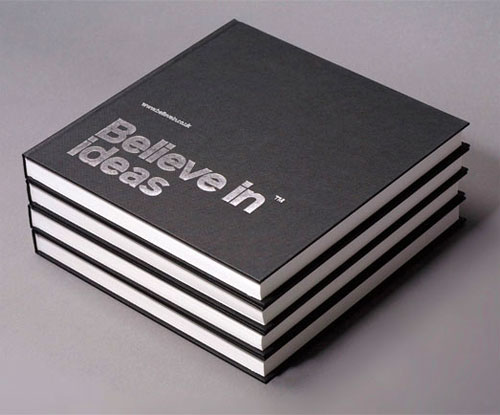
For designers, it’s never enough to merely follow the design brief a client gives you. In identity design, we view our projects as opportunities to dig deep, mining the best parts of an organisation to get at the heart of what makes each client unique. It’s these nuggets that are essential when attempting to distill a company’s essence into a logo.
Gathering these insights requires a crucial bit of give-and-take — not as easy as it sounds. Like being a good investigative reporter, a great designer is dogged and determined, yet pleasant, empathetic, and challenging. I’ve come to believe that the best creatives are equal parts artist, therapist, and journalist: generating ideas, giving and receiving feedback, and communicating the results well.
The client interview (which is a part of the larger creative brief) is a necessary piece of every successful project. This is especially true when crafting identity systems, as few projects hinge so directly on the ability to listen, ask questions, and process the answers. The info a designer gathers will be boiled-down (hopefully) into a single sentence that guides all design decisions throughout the process.
Whether this interviewing process happens in-person (the most effective), on the phone, or via Skype, getting a client to talk freely and helpfully about their organization is more art than science. So here are a handful of ways to get the best from this mutual exploration with your client.
It’s about listening
As obvious as it sounds, few people are truly great listeners. The words that one person utters may mean something vastly different another. Without realizing it, most of us get distracted, focus on what we’ll say next, or add our own feelings and associations to what we hear.
Use “active listening skills” to avoid such communication breakdown.
Often employed in counseling settings, this is a simple process of rephrasing another person’s words as a clarifying question, in order to develop more accurate understanding. After you rephrase an important point, the client has the opportunity to make corrections or clarifications. An example might look like this:
Client: “We really want our new logo to be bold and attention-grabbing.”
Designer: “So, it sounds like you want this logo to have bright, strong colors to catch the eye. Is that right?”
Client: “Well, not necessarily. I guess what I really meant is that I’d like it to stand out within our industry.”
Ask the right questions
As you listen, be on the lookout for key words and phrases. What are the main goals of the project? Are there points your client keeps repeating? Those are probably important. As you gather data, ask yourself questions about what you’ve heard. What is the narrative thread of the organization? Is there some story or big picture that emerges from everything you’ve gathered? Is there a way to tell this story using metaphors and symbols that could make their way into your designs?
Be sure to get these crucial questions answered. Start by covering the elements of any good design brief (goals, audience, parameters, content needs, etc.) and then venture into the more intangible aspects like feelings, emotions, “personality” of the company, and the like. But remain focused on your goal. Guiding an interviewee isn’t about confirming your own beliefs or agenda, but truly seeking to get at the story of the organization.
“True contentment comes with empathy.”
Finally, any interviewer worth their salt needs to step into the client’s shoes. How do things look from the other side of the table? Seek to see the person as they see themselves — crucial when you’re trying to translate an organization’s essence into something visual. It’s essential to find out what drives your client and their company.
What is their reason for being? How will you take that mission and turn it into a great mark or identity system?
Only by asking and answering these questions will you be able to find out.
—
Tim Lapetino is a principal of the brand design firm Hexanine. A strategist, designer and writer, his work has been featured in LogoLounge books, Logoliscious, and Los Logos. He serves as adjunct faculty at the Chicago Portfolio School and writes regularly on the Hexanine blog, Zeroside. Follow Tim on Twitter.




Comments
That’s so true about a lot of people not ACTUALLY listening… it’s a key ability! And it takes practice. The art of listening (and it is an art) and asking the right questions is something that needs work and lots of practice but boy does it pay off, especially when you can deliver a design to a client that they are deliriously happy with… and all because you listened and got down to what they REALLY want.
Solid article.
Will be having a meeting via skype this evening with a client to discuss a logo design which will be my first piece of freelance work. This advice couldn’t have arrived at a better time for me.
Some great tips.
Thanks!
I’d love to read any other articles or conversations that regard the interviewing and information-gleaning process. It’s one of the areas of graphic design that I could use some improvement. Any links out there?? :)thanks
Thanks Tim, you bring up very valid points and as you know it’s not always easy to crack the clients shell. I have had quite a bit of luck talking around the topic first (i.e. – Interests, hobbies, etc). It seems that if you can find some common ground not only does it loosen the client up, but puts you on a higher level of trust.
It might sound ridiculous but sometimes I feel like business owners are very overprotective of their business, almost like what you’d expect of someone talking about their child. Just as in “my childs so smart” it’s “my business is so great”, “our concept is so unique, we don’t really have any competition”, etc. If you can establish that level of trust it seems like the client can let that go and is much more willing to let you in…maybe last months sales figures were down, maybe there’s a new company that’s sweeping them under the rug, whatever it is this is when the investigating and learning really begins.
very true and really interesting.
thanks xxx
I actually just finished reading and reviewing a book called “IdeaSelling” that talked about a lot of your same points in how to properly talk to the client and get your ideas across to them. The book was a little too much for what I do, but would work great for designers and agencies :)
Thanks for all the great feedback, everyone. This part of being a designer/design firm seems like it’s one of those “trial and error” areas, so I was excited to share what we’ve learned by often doing the wrong things in the past. :) As was mentioned in some of the comments, this is a crucial part of building the client relationship, and can make the rest of the process much easier.
Amber,
I read a great portion of that book just now on Amazon.com and I’m convinced that I need to buy it now. Thank you!
This was really helpful! I always find articles for the interviewee not he interviewer!
Thanks, Brett. Glad it was helpful. :)
Thanks for this. It helped me out a lot on my first ‘design job’. :)